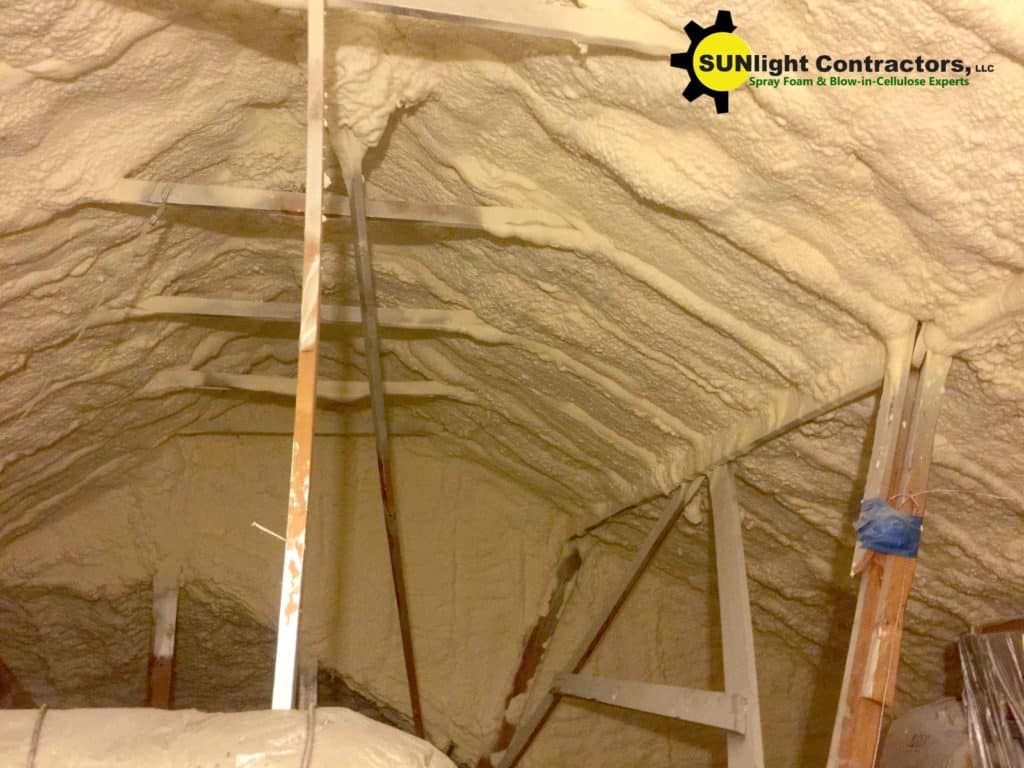Case Study: Berger Attic Encapsulation – Attic Insulation
Temperatures and Utilities Rising
Like many New Orleans homeowners, Eric Berger’s summer utility bills were enough to make him sweat. As temperatures outside rose beginning in May, his air condition struggled to maintain comfortable indoor temperatures. His bills reflected that struggle, often skyrocketing to $300 to $305 during the hot summer months.
Eric considered several possible solutions to his problem, including replacing his air conditioner. Though he knew the model wasn’t the most energy efficient, it was only four years old. It was much too soon to buy a new one.
His instinct was correct. All homes are required to maintain insulation between the attic and living spaces. However, the attic space itself is often left uninsulated, causing temperatures to reach triple digits quickly. Because Eric’s HVAC ductwork ran through the attic, his air conditioner was forced to perpetually re-cool the air that passed through the ducts. In other words, a bigger, more energy efficient air conditioner wouldn’t reduce his utility cost at all.
The Spray Polyurethane Foam Solution
After meeting with Eric and performing a free home energy audit to determine his needs, we all agreed that open cell spray polyurethane foam insulation was the solution. It would solve the dual problems of air infiltration, where hot outside air leaked into the attic through cracks and crevices, and radiant energy, where the sun’s heat rapidly raised temperatures in the attic.
Our certified spray foam contractors applied the spray polyurethane foam insulation directly to Eric’s roof deck using heated hoses and spray foam guns, which deliver the spray foam as a liquid from the Graco Reactor proportioning system in our rig. Once it expanded it seeped into any small openings that allowed conditioned air to escape and the hot air outside to enter.
By applying the requisite five inches of foam to the roof deck, the entire attic was insulated from the sun’s radiant energy, which meant the temperatures in the attic dropped from 140 degrees to a comfortable 75 degrees in a short afternoon. Because we use spray foam with an integrated ignition barrier, Eric’s attic was completely sealed and safe within hours of the spray foam curing.
Attic Temperatures Plummet and So Do Utility Bills
Because Eric’s air conditioner no longer had to continuously re-cool air that ran through ductwork in the attic, Eric’s summer energy use dropped drastically right away. The spray foam was applied in July, making August Eric’s first full month with insulation. His bill dropped from $304 in 2013 to $179. This never would have happened if the full 5 inches required by code wasn’t installed.
“I would say that is a serious improvement in the energy savings I am experiencing from the spray foam insulation,” Eric says. “Since I have gotten the spray foam in the attic, my home’s temperature has not gone above 79. My unit cycles on and off the way it is supposed to. The house is amazingly cooler. Even the attic. A friend of mine stopped by and he stuck his hand in the attic, and it wasn’t even warm!”
Spray polyurethane foam provides a safe, durable, and energy efficient solution to the rising cost of utility bills in New Orleans, and Sunlight Contractors provides services and solutions above and beyond our competitors. All customers receive a comprehensive energy audit before work is started and after all work is complete. That’s the only way anyone can tell if the job was done correct. We are Goldstar certified with the Building Performance Institute (BPI).
Our team of spray foam contractors are all certified with the independent Spray Polyurethane Foam Association, and we use only the safest, most effective spray foam products, but you don’t have to take our word on it. Just talk to any of our clients.
“I can’t say enough that I am extremely satisfied with the product and the work that Sunlight Contractors did. I would recommend them to anybody – and I have done that already.” ~ Eric Berger, New Orleans, Louisiana.

